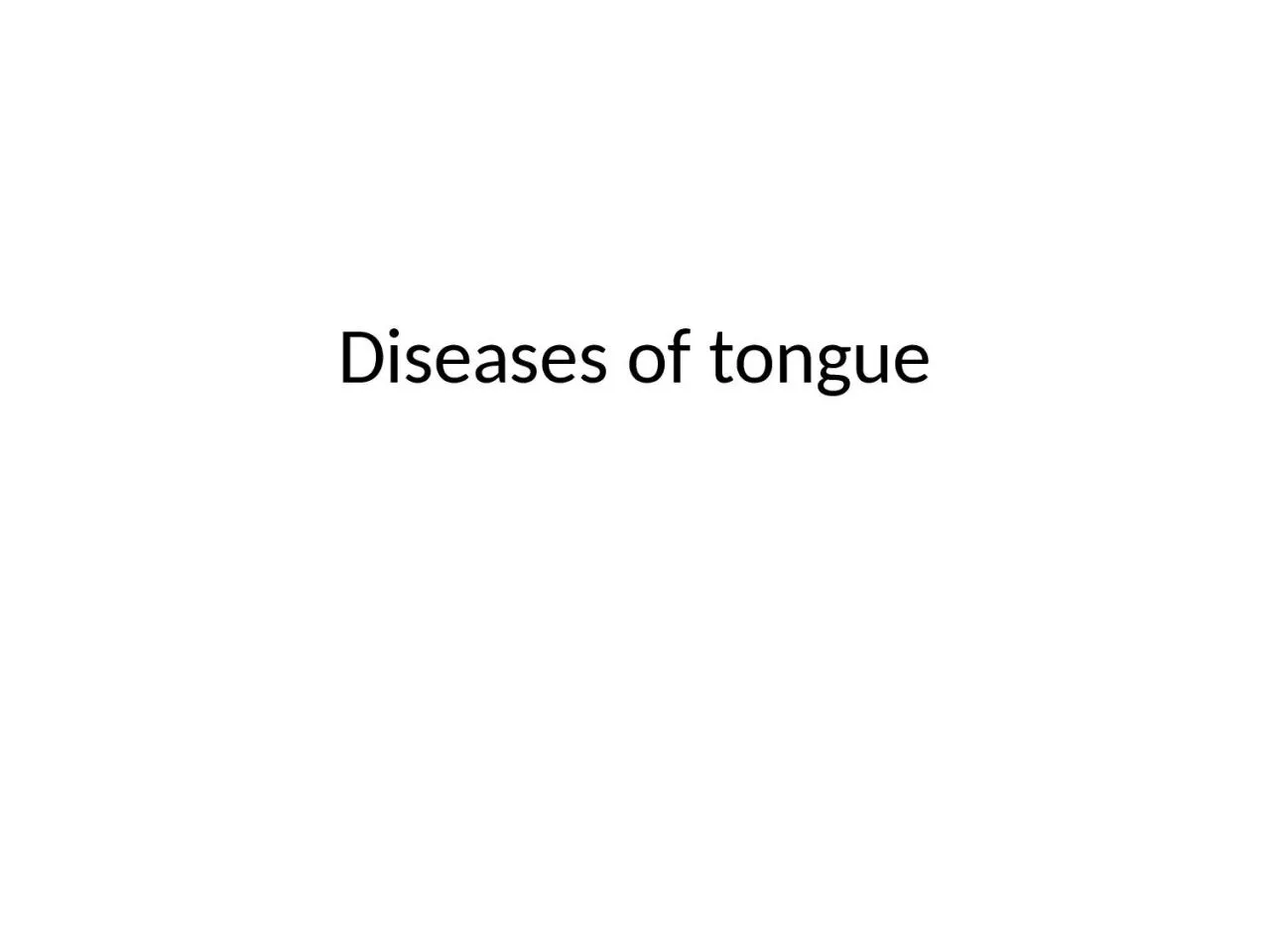

Congenital causes Vascular malformations Hemihyperplasia Cretinism Beckwith Wiedemann syndrome Down syndrome Mucopolysaccharides Neurofibromatosis Multiple endocrine neoplasia type 2B ID: 1046822
Download Presentation The PPT/PDF document "Diseases of tongue Macroglossia" is the property of its rightful owner. Permission is granted to download and print the materials on this web site for personal, non-commercial use only, and to display it on your personal computer provided you do not modify the materials and that you retain all copyright notices contained in the materials. By downloading content from our website, you accept the terms of this agreement.
1. Diseases of tongue
2. Macroglossia Congenital causes:Vascular malformationsHemihyperplasiaCretinismBeckwith-Wiedemann syndromeDown syndromeMucopolysaccharidesNeurofibromatosisMultiple endocrine neoplasia type 2B
3. Acquired: Edentulous pts amyloidosisMyxedemaAcromegalyAngioedemaCarcinoma and other tumors
4. Most common in childrenRanges from mild to severeManifestations: noisy breathing, drooling, and difficulty in eatingTongue enlargement can result in lisping speechPressure of tongue against mandible can result in crenated lateral border of tongue, open bite and mandibular prognatismMultinodular appearance – amyloidosis, neurofibromatosis, MEN
5. Lymphangioma – tongue appears pebbly and shows multiple vesicle like blebsDown syndrome – papillary, fissured surfaceHemifacial hyperplasia – unilateral enlargementEdentulous – tongue appears elevated and tends to spread out laterally
6. Ankyloglossia Is a developmental anamoly of the tongue characterized by short, thick lingual frenum resulting in limitation of tongue movementComplete ankyloglossia – tongue is actually fused to the floor of the mouthResults in speech defects
7. Lingual thyroidDuring the 3rd to 4th week of fetal life, the thyroid gland begins as an epithelial proliferation in the floor of the pharyngeal gutBy 7th embryonic week, this thyroid bud normally descends into the neck to its final resting position anterior to trachea and larynxThe site where this descending bud invaginates later becomes the foramen caecumIf the primitive gland does not descend normally, ectopic thyroid tissue may be found b/w foramen caecum and epiglottis
8. Frequent in femalesSmall, asymptomatic nodular lesions to large masses to block airwayClinical symptoms: dysphagia, dysphonia and dyspnea
9. Fissured tongueSyn: Scrotal tongueRelatively commonNumerous grooves and fissures are present on dorsal surface ranging from 2 -6 mm in depthFissures cover the entire dorsal surface and divide the tongue papilla into multiple several islandsCondition is asymptomaticSome patients may complain of mild burning or soreness
10.
11. Hairy tongueIs characterized by marked accumulation of keratin on the filiform papillae of the dorsal surface, resulting in hair like appearanceIt represents decrease in keratin production or decrease in normal keratin desquamationAntibiotic therapyPoor oral hygieneGeneral debilationRadiation therapyUse of oxidising mouthwashes or antacidsOvergrowth of fungal or bacterial organisms
12.
13. Most commonly affects the midline just anterior to circumvallate papillae, sparing the lateral and anterior bordersElongated papillae are brown, yellow or black as a result of growth of pigment producing bacteria or stainsThe dorsum may sometimes appear as thick, matted appearancePts are asymptomaticOccasionaly pts c/o gagging sensation or bad taste
14. Varicosities/ VaricesAre abnormally dialated and tortuous veinsAge is a predominant factorLoss of CT tone supporting the vesselsPresents as multiple bluish-purle, elevated or papular blebs on the lesions and are asymptomaticVarices: esplly on lips and buccal mucosaThrombosed varix presents as a firm, nontender, bluish-purple nodule
15.
16. Median rhomboid glossitisWas thought to be a developmental defect, resulting from failure of embryologic tuberculum impar to be covered by lateral processes of tongueAppears as a well demarcated erytematous zone affecting the midline and is often asymptomaticThe erythema is due to loss of filiform papillae
17.